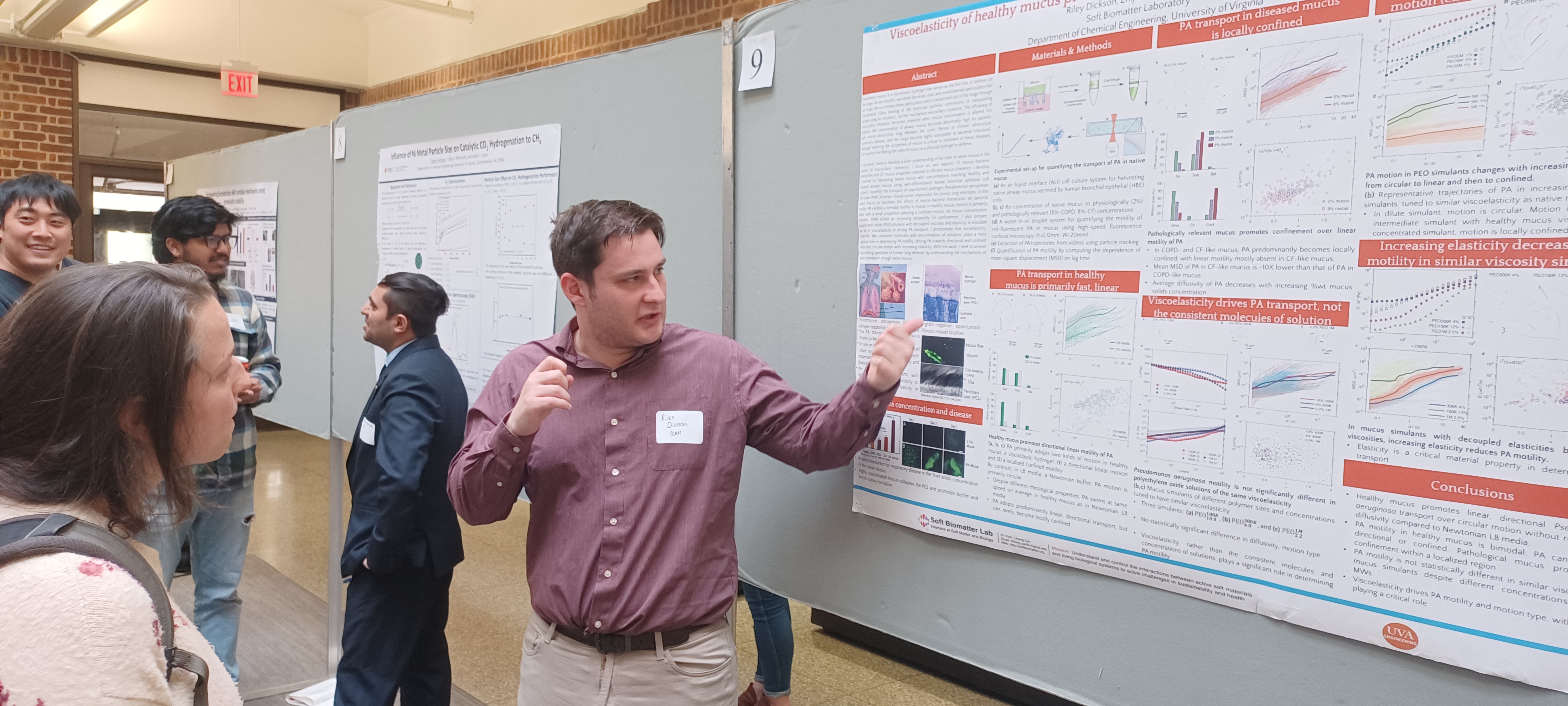Oranges aren’t just for breakfast anymore.
In fact, they’re now looking like a viable candidate, in solvent form, to build lighter, more fuel-efficient cars and a host of other applications.
Kenneth Brown, a mechanical and aerospace Ph.D. candidate and a former design engineer for Penske Racing’s NASCAR team, won the 2024 UVA Engineering Research Symposium on March 29. He demonstrated that a solvent made from orange peels can be used as a non-toxic alternative to other solvents in the production of ultra-high molecular weight polyethylene.
“These fibers are known to be super strong, stiff, and low-density, which makes them great for applications like lightweight body armor or mooring ropes for massive offshore wind turbines, and potentially structural composites to make vehicles lighter and more energy efficient,” Brown said. “But making them requires vast amounts of toxic, non-renewable, petrochemical solvents. I learned that a naturally derived solvent extracted from orange peels, called orange terpenes, could be used for this, but there was little information on how this worked or what the resulting fibers were like. So I set out to determine the potential of this solvent as an alternative to the conventional solvents.”

Brown dissolved polyethylene powder into the orange terpenes and extruded the solution into a gel fiber using his custom-built spinning apparatus. He evaporated out the solvent. Then, he drew the fibers out onto a spool and compared them to ultra-high molecular weight polyethylene that’s already on the market.
“What I found was that the fibers have strength and stiffness commensurate with those spun using conventional petrochemical solvents under similar processing conditions,” he said. “And there is significant potential to increase these properties to commercial-grade levels based on the microstructural characteristics of the fibers.”
He added that the fibers he produced possess a unique, flat, ribbon-like shape that is desirable in applications that need fibers to be tightly packed.
“I think these results demonstrate an exciting opportunity to use a renewable resource, potentially a food waste byproduct, to make high-performance materials in a more environmentally friendly way,” he said.
Brown worked in the lab of his graduate mentor, Xiaodong “Chris” Li, a Rolls-Royce Commonwealth Professor. They and graduate students Cole Love-Baker and ZhiJing Xue published the research in February in the journal Polymer Engineering and Science.
A graduate of Clemson University, Brown gave up life on a winning race team in order to see what else he might accomplish at UVA and beyond.
“Although working for Team Penske was a life dream achieved, I knew that my engineering career had more room to grow,” he says on his personal website. “My passion for motorsports had not waned, but I realized that I wanted to make greater contributions to the world with my engineering training. … [Professor Li], and many other university faculty and staff, espoused the UVA mission to create engineering leaders rather than engineering specialists, which fully resonated with my newfound ambitions. I hope to someday lead teams of engineers to develop the technologies that will improve the lives of my fellow humans while reducing our impact on the environment.”
20th UVA Engineering Research Symposium Winners (UVERS 2024)
In the UVERS competition, Brown took first place for both best presentation and best poster.
Mehrab Zakaria, studying computer science, and Aronson Benjamin, studying materials science and engineering, took second and third place for their presentations on a mathematical formula to predict conflict-induced migration and how electrode chemistry affects a specific aspect of a thin film used in next-generation memory devices, respectively.
Parisa Javadi, a student focused on environmental and civil engineering, won second place for poster design on the topic of regional strategies for net zero emissions using specific carbon removal methods. Riley Dickson, who is studying chemical engineering, took third for his poster on the lungs' mucus transport of the antibiotic resistant bacteria Pseudomonas aeruginosa.

Learn more about the Graduate Engineering Student Council’s annual event, and get more details about this year’s and past winners at the UVA Engineering Research Symposium page.